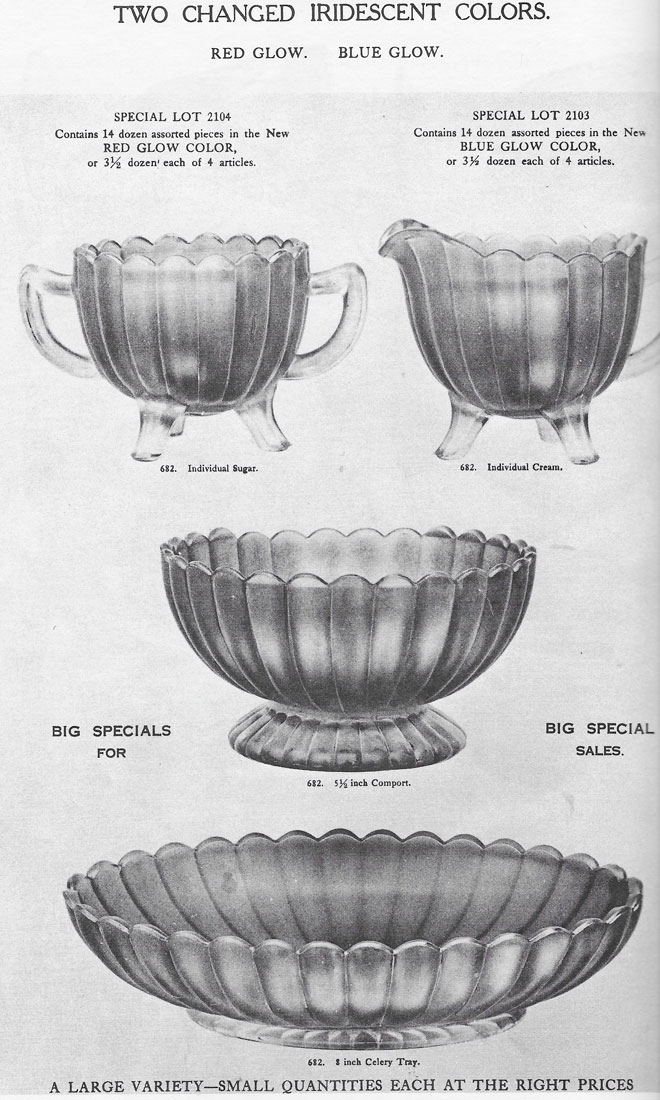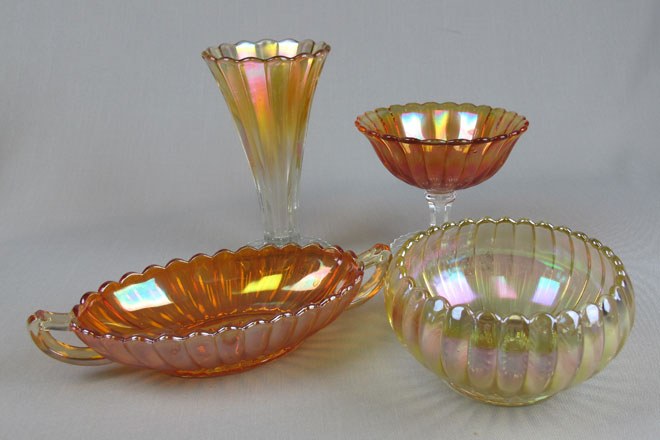
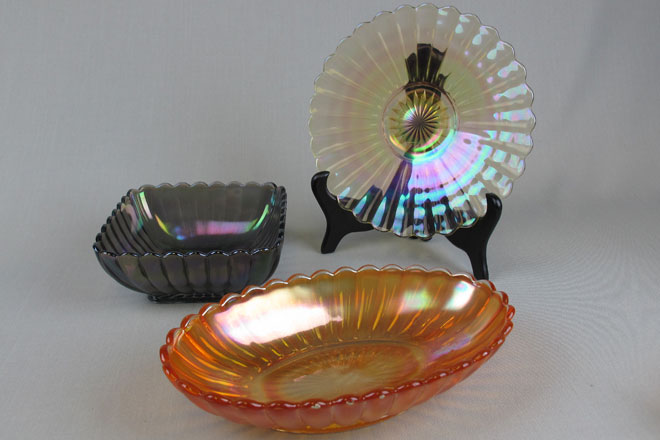
Shapes include 4 inch tall compotes, 6 inch tall vases, rosebowls and double handled relish dishes that are 8 inches across including the handles as shown in the photo to the left. Also included are pickle or relish dishes, a 7 inch plate and square bowls as shown in the photo to the right.
Below to the left is a chop plate. A large round and flared bowl is also known and would sit on this chop plate to form a set. Below to the right is a creamer and sugar breakfast set and a single handled nappy. Also below are a dome footed bowl and a collar base bowl which may come in various sizes.
Colors are either clambroth or marigold. A rare smoke example may be found.
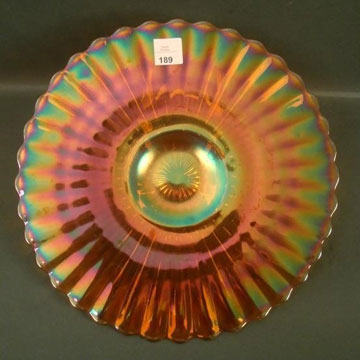
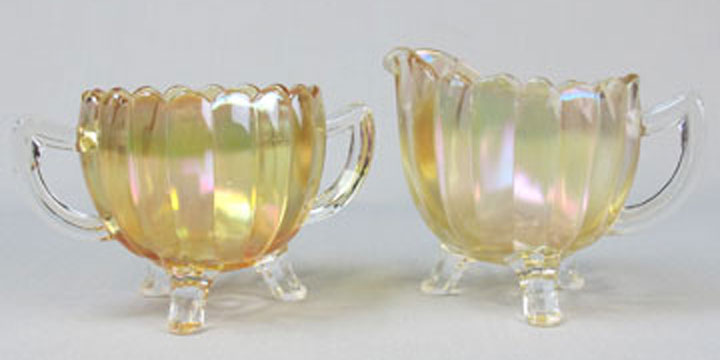
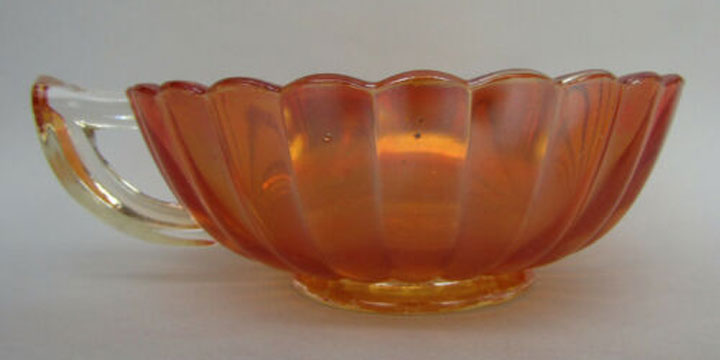
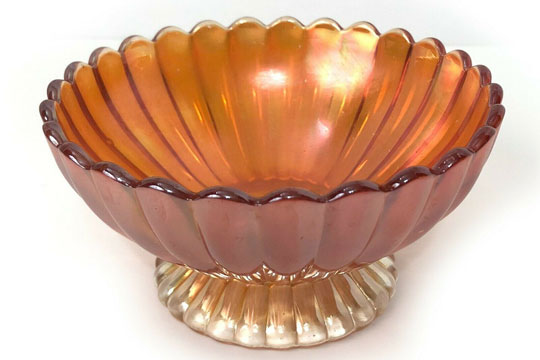
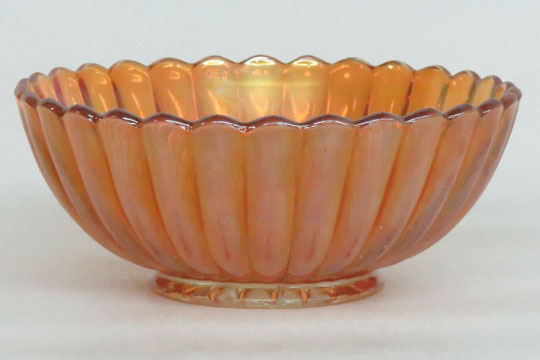
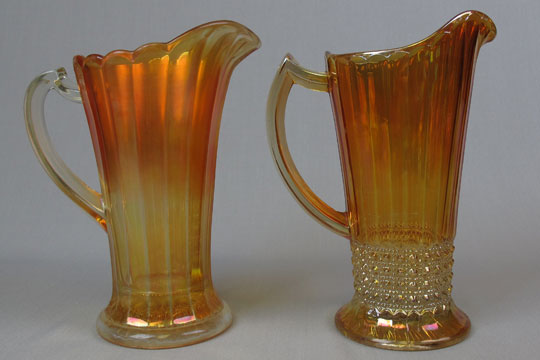

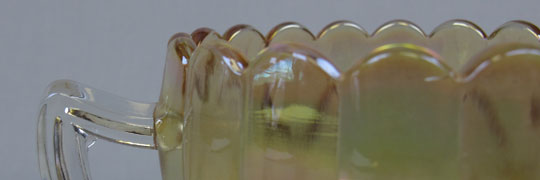
However, including the water pitcher to the left in the family of Pillar and Flute shapes may be a mistake. Pillar and Flute pieces all have vertical ribs that are concave while the pitcher has vertical ribs that are convex. From the Merriam-Webster dictionary: Concave means "hollowed out or rounded inward" and is easily remembered because these surfaces "cave" in. The opposite is convex meaning "curved or rounded outward." Also in Pillar Flute pieces, the top of the vertical rib is the scalloped top. In this pitcher the vertical rib top ends just slightly before the scalloped top.
